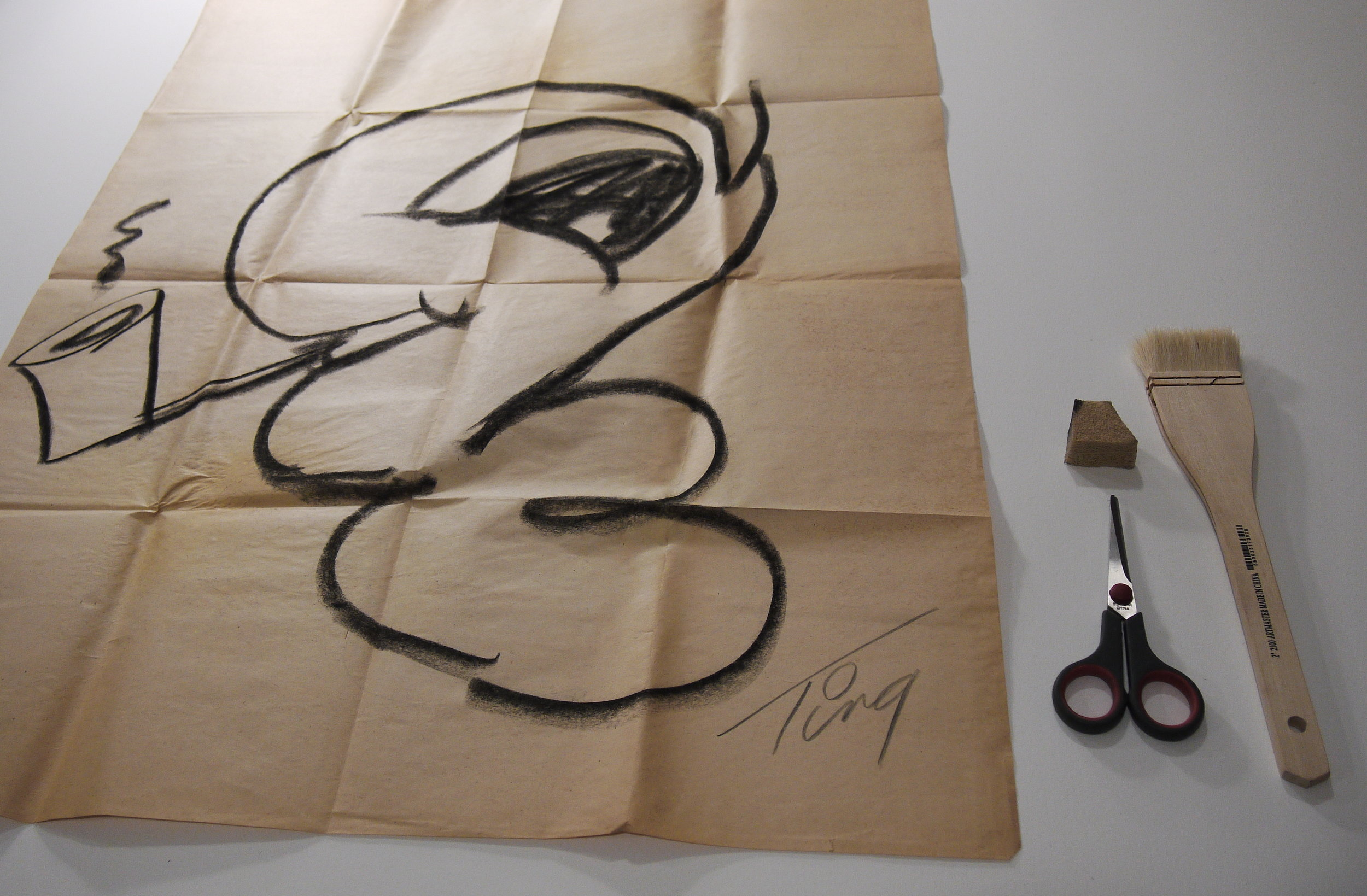Conservation of original art on paper is one of our specialties at Book and Paper Conservation Services. This piece, a charcoal sketch by London artist Ting (Merle Tingley, b. 1921) of his trademark character Luke Worm, recently came to our studio for treatment.
Luke Worm sketch by Merle Tingley, before conservation.
Luke Worm sketch in raking light, showing creases.
The sketch dates to the 1960s, and was a gift by the artist to the owner, who met him while touring the London Free Press as a student.
Executed in charcoal on a thin, wood pulp paper, the loosely drawn lines give a lively and charming quality to the character of the worm.
The paper had been stored folded into multiple panels for many years; creases disfigured the page, and the charcoal media had transferred to the bare paper opposite the design.
Ting sketch after surface cleaning.
The paper was surface cleaned to remove the transferred charcoal media, with care taken not to disturb any of the original media. It was then humidified to relax the creases and flattened under weight. Finally, several small tears were repaired with Japanese tissue.
Luke Worm by Merle Tingley, after conservation treatment. The work was framed in acid-free materials and UV filtering glass.
The sketch was framed for display in acid-free materials, with UV filtering glass. It is now safely preserved, and will be enjoyed for many years to come.
Check out our other treatments of fine art on paper, or get in touch if you have questions about having works of art conserved.











